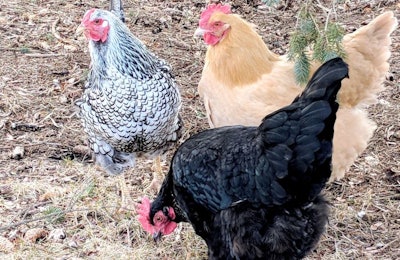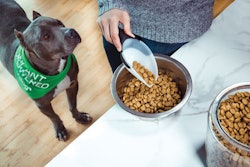
In an experiment, processing chicken in different ways altered the qualities of its proteins and digestibility in pet food. Scientists compared chicken meal to raw, steamed and retorted chicken-based ingredients. All of these pet food ingredients were freeze-dried prior to digestibility testing.
“The chicken meal was the biggest outlier in terms of composition and nutrient digestibility,” said study co-author Kelly Swanson, PhD, University of Illinois – Urbana-Champaign professor in the animal sciences department’s nutrition division. “The raw, retorted and steamed chicken sources were pretty comparable. Considering all things, the steamed source was the best, but all three were pretty high quality and highly digestible.”
The Journal of Animal Science published the results of Swanson’s study.
Comparison of chicken products’ nutrient digestibility and protein quality
Swanson summarized his research team’s findings.
Composition: “The chemical composition of chicken meal was quite different than that of the raw, steamed and retorted chicken-based ingredients studied,” he said.
Chicken meal had greater ash, protein and most essential amino acid concentrations. The chicken meal contained lower acid-hydrolyzed fat concentration, along with a lower gross energy content.
“This shift in macronutrients was likely due to fat losses during processing,” he said.
Macronutrient digestibility: Chicken meal had a lower dry matter and organic matter digestibility, he said. However, chicken meal had a higher acid-hydrolyzed fat digestibility than raw, steamed and retorted chicken-based ingredients.
Amino acid digestibility: “For all essential and non-essential amino acids, steamed chicken had the highest digestibilities,” Swanson said. “For all essential and all but one non-essential amino acid (proline), raw and retorted chicken digestibilities were similar to one another and higher than chicken meal.”
Processing and testing methods used on chicken-based pet food ingredients
In Swanson’s experiment, the steamed chicken was cooked to 200 degrees Fahrenheit, held at that temperature for 10 minutes, then cooled and freeze-dried. The retorted chicken was heated to 250 degrees Fahrenheit for 30 minutes, then cooled and freeze-dried. The raw chicken was just freeze-dried.
All of the chicken products were evaluated using the precision-fed cecectomized rooster assay. The cecum forms part of the large intestines and serves to help some herbivores store and break down plant matter, such as cellulose. The human appendix is anatomically analogous to the rooster's cecum, although in humans the organ no longer serves a purpose. Birds have two cecum. These ceca are blind pouches located where the small and large intestines join. By removing the rooster’s cecum, scientists make roosters' digestive systems more similar to dogs, cats, humans and other animals.
“To evaluate ingredients for nutrient composition and digestibility in the rooster assay, we actually have to freeze dry them,” said Swanson. “Therefore, assuming that heat treatment was avoided prior to freeze-drying, I would expect freeze-dried sources to perform similar to the raw sources.”
Freeze-dried raw meat has grown in popularity in pet food. Freeze-dried raw meat may allow dog and cat food brands to meet consumer demands for raw meat, while reducing safety risks from unprocessed raw meat.















